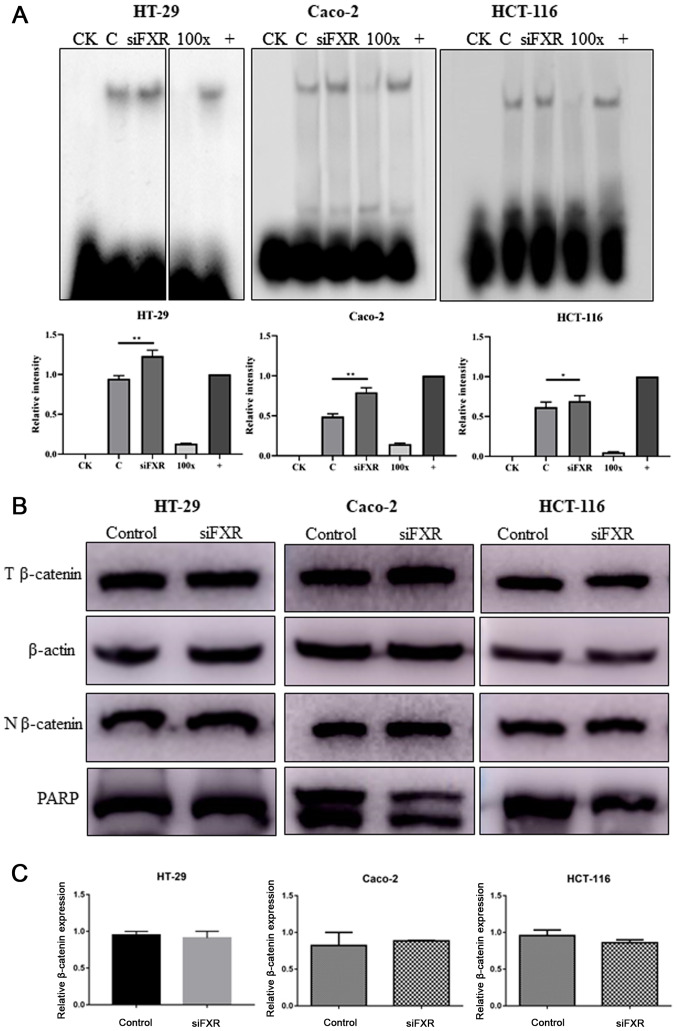Figure 2.
FXR activates the Wnt signaling pathway via increasing β-catenin/TCF4 complex levels. (A) Silencing FXR increases β-catenin/TCF4 complex formation as detected by an electrophoretic mobility shift assay. Images of HT-29 cells were from discontinuous parts of the same gel. Intensity analysis using ImageJ (version 1.52q; National Institute of Health) is also revealed to demonstrate the difference among groups. (B) T protein and N protein were extracted separately to determine the expression and distribution of β-catenin after FXR silencing. (C) β-catenin mRNA levels were not different after FXR silencing. PARP, Poly (ADP-ribose) polymerase, which is expressed in only the nucleus, was used as a loading control. The error bars represent the SEM of three independent samples. FXR, farnesoid X receptor; CK, background control; 100×, competitive control; +, positive control; C, control group pre-treated with negative control siRNA; T, total; N, nuclear; si, small interfering; NC, negative control. *P<0.05; **P<0.01.

